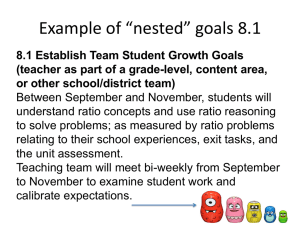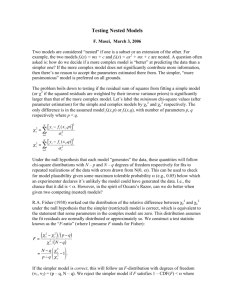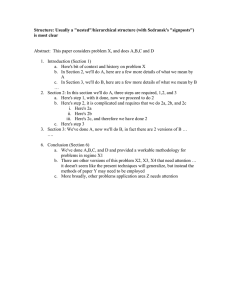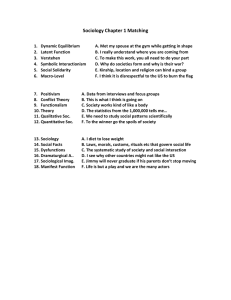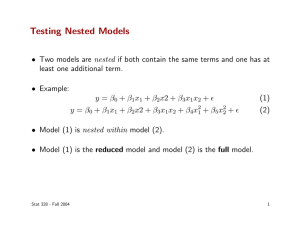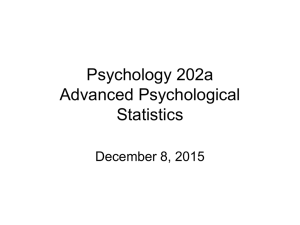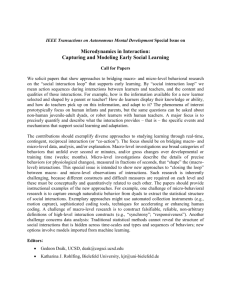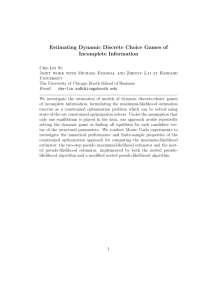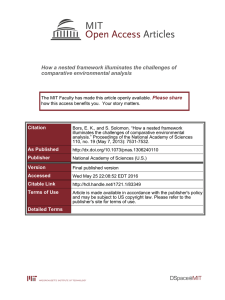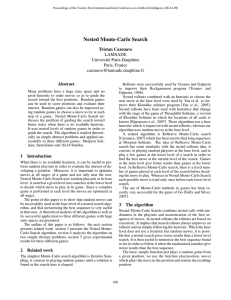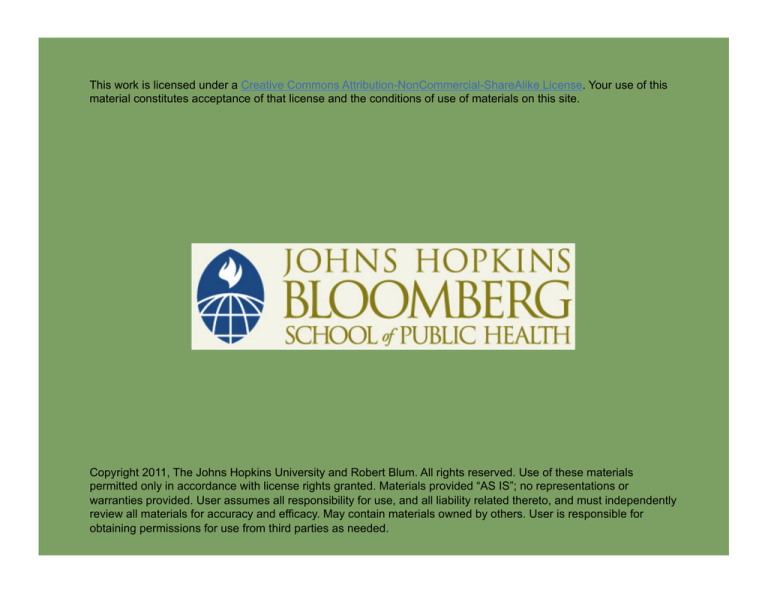
This work is licensed under a Creative Commons Attribution-NonCommercial-ShareAlike License. Your use of this
material constitutes acceptance of that license and the conditions of use of materials on this site.
Copyright 2011, The Johns Hopkins University and Robert Blum. All rights reserved. Use of these materials
permitted only in accordance with license rights granted. Materials provided “AS IS”; no representations or
warranties provided. User assumes all responsibility for use, and all liability related thereto, and must independently
review all materials for accuracy and efficacy. May contain materials owned by others. User is responsible for
obtaining permissions for use from third parties as needed.
Growing Up in Toxic Environments
Robert Blum, MD, MPH, PhD
Johns Hopkins University
Section A
A Nested Model of What Children
Need for Healthy Development
A Nested Model of Factors for Healthy Child Development
Macro-Level Environment
Food subsidies Welfare-to-Work
legislation No Child Left Behind
legislation SSA Title 19
UN Conventions on the Rights of the
Child FCC (e.g., tolerance for
violence) EPA standards Urban
boundaries
4
A Nested Model of Factors for Healthy Child Development
Macro-Level Environment
Food subsidies Welfare-to-Work
legislation No Child Left Behind
legislation SSA Title 19
UN Conventions on the Rights of the
Child FCC (e.g., tolerance for
violence) EPA standards Urban
boundaries
5
A Nested Model of Factors for Healthy Child Development
Macro-Level Environment
Community/Neighborhood
Physical deterioration Exposure to
violence Norms (e.g., civility,
violence, aggression) Green spaces
Green grocers Neighborhood income
& education Television Fear
Partner prospects Mobility
Collective efficacy
6
A Nested Model of Factors for Healthy Child Development
Macro-Level Environment
Community/Neighborhood Environment
Daycare/Preschool, School
Access to Early Head Start Quality
Daycare by age 2 Language & prereading skills development Social
skills development Small school
Teacher/adult connectedness High
expectations Safety: physical,
emotion, & academic supports
7
A Nested Model of Factors for Healthy Child Development
Macro-Level Environment
Community Environment
Schools and Daycare
Family Structure
Family mental health Maternal
depression Parental education &
income Faith/religiosity Parenting
“style” Parent availability Food/
housing security Expectations
8
A Nested Model of Factors for Healthy Child Development
Macro-Level Environment
Community Environment
Family & School
Individual
Biological/cognitive vulnerability
Irritable temperament Aggressive
personality Impulsive High stress
reactivity Interpersonal social skills
9

